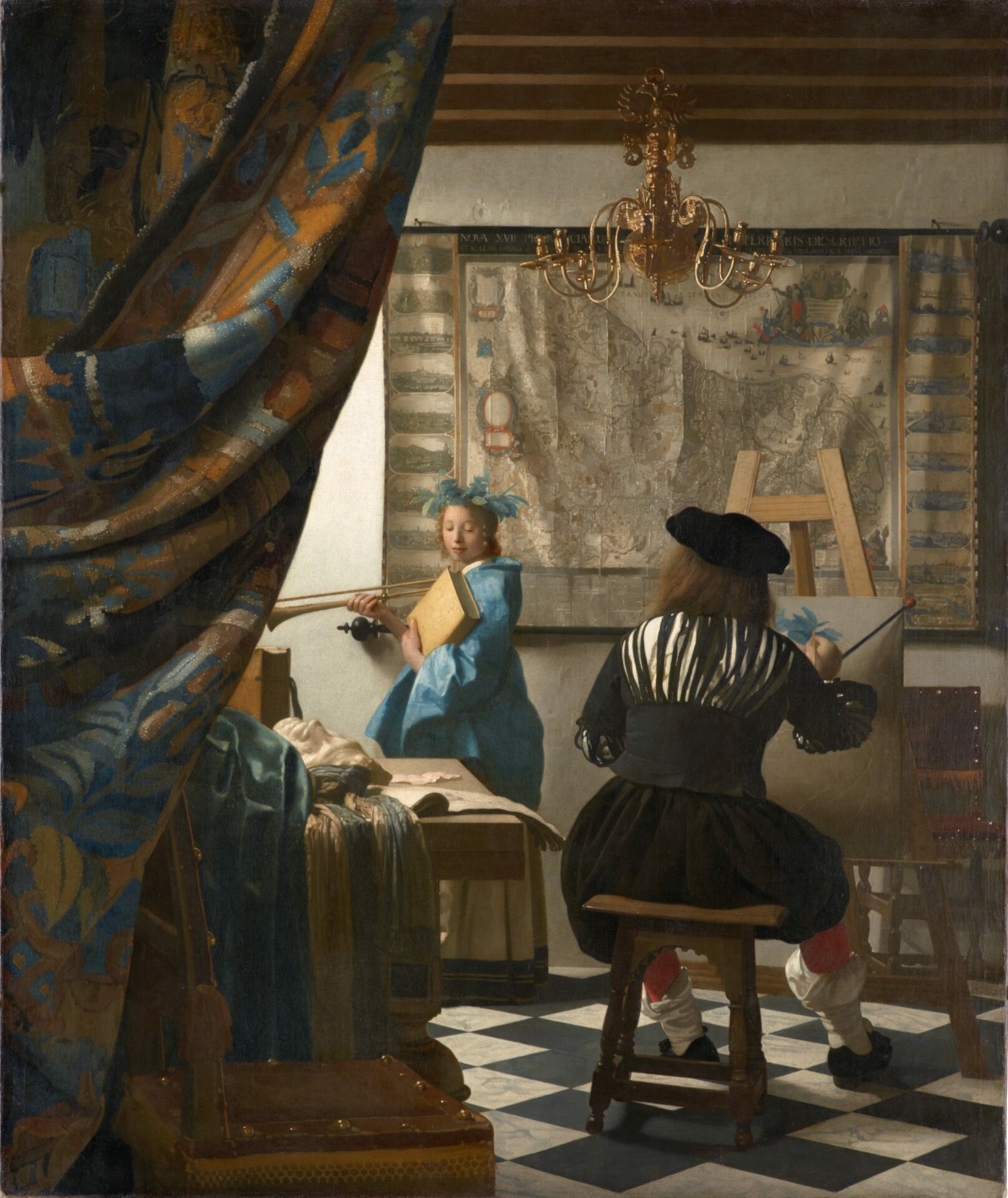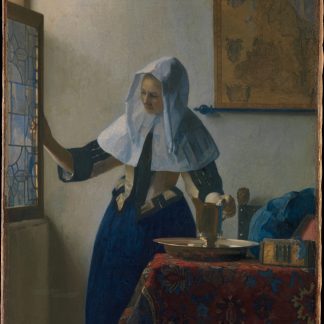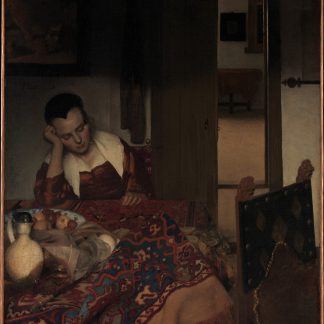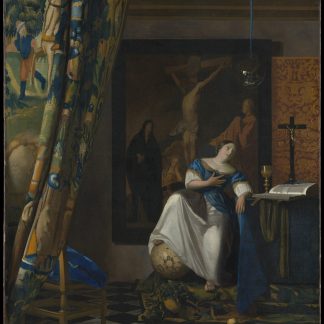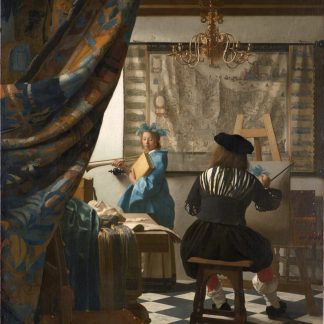The Art of Painting
From $28.69
Product Options:
Giclee Print – Paper:
Giclee print on premium archival quality Fine Art Matte paper. Certificate of Authenticity included. Shipped rolled and ready to be framed.
Giclee Print – Canvas:
Exhibition quality canvas stretched over wooden stretcher bars w/mirrored edge so none of the original image is lost. Certificate of Authenticity included. Ready to hang on your wall.
Giclee Print – Framed:
Giclee print on premium archival quality Fine Art Matte paper with selected frame, single white mat & acrylic front. Certificate of Authenticity included.
Description
Many art historians think that it is an allegory of painting, hence the alternative title of the painting. Its composition and iconography make it the most complex Vermeer work of all. After Vermeer’s Christ in the House of Martha and Mary and The Procuress it is his largest work.
This illusionistic painting is one of Vermeer’s most famous. In 1868 Thoré-Bürger, known today for his rediscovery of the work of painter Johannes Vermeer, regarded this painting as his most interesting. Svetlana Alpers describes it as unique and ambitious; Walter Liedtke “as a virtuoso display of the artist’s power of invention and execution, staged in an imaginary version of his studio …”According to Albert Blankert “No other painting so flawlessly integrates naturalistic technique, brightly illuminated space, and a complexly integrated composition.”
Bibliography
The Art of Painting, https://en.wikipedia.org/w/index.php?title=The_Art_of_Painting&oldid=1100339867 (last visited Aug. 4, 2022).



